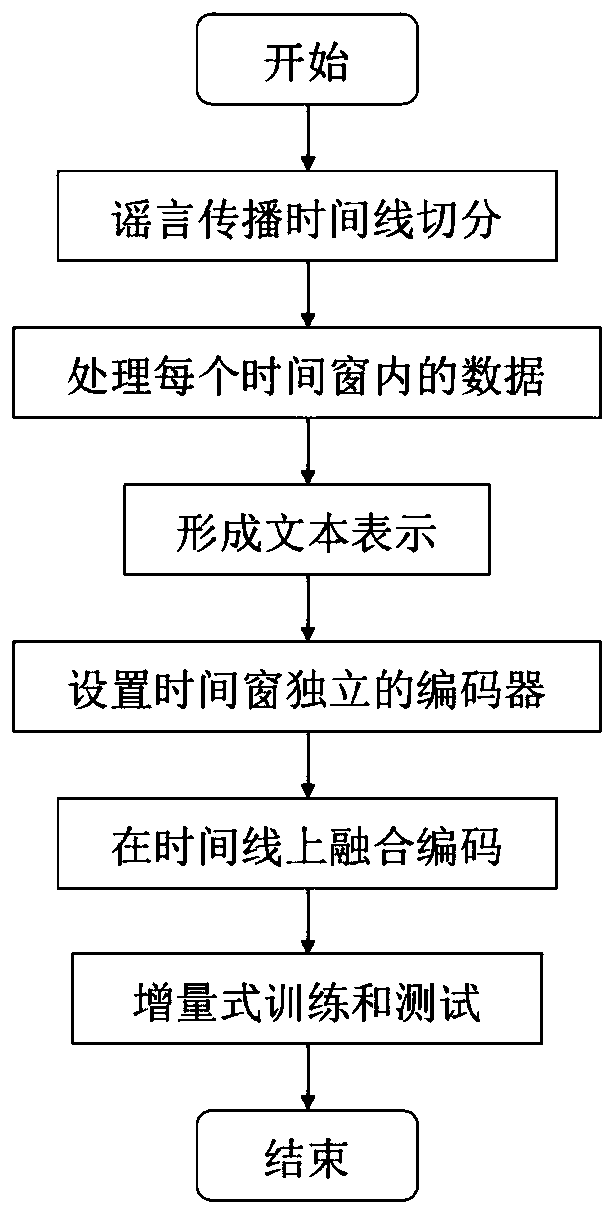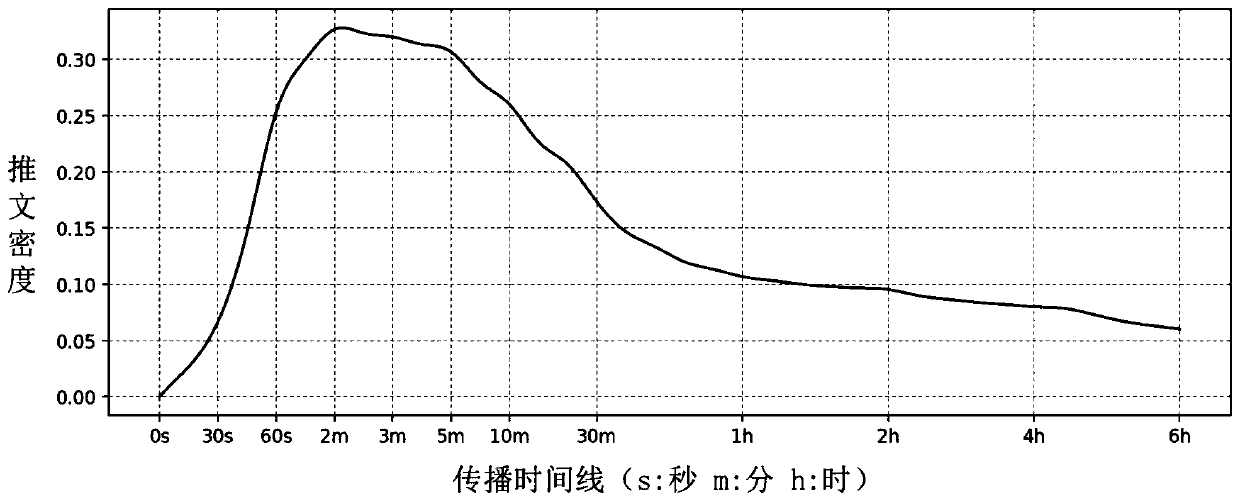Rumor early detection algorithm based on time sequence segmentation and fusion
An early detection and rumor technology, applied in computing, neural learning methods, natural language data processing, etc., can solve the problem of low early detection efficiency of the model, achieve the effect of curbing the spread of rumors in a short time and improving the detection effect
- Summary
- Abstract
- Description
- Claims
- Application Information
AI Technical Summary
Problems solved by technology
Method used
Image
Examples
Embodiment
[0036] This embodiment is carried out on a rumor data set, which contains a large number of rumor events, each rumor event has an original microblog and a label of authenticity, and a large number of tweets or comments related to the topic constitute a rumor event. The rumor event can be marked as E, where the earliest tweet can be regarded as the original Weibo published at time 0 c 0 , other tweets c i Then there is a corresponding release time t i , i>0. The representation of rumor events can be further extended as E={(c 0 ,0), (c 1 , t 1 ),..., (c m , t m )}, where m represents the number of tweets. Rumor event E also has a corresponding label Y to mark whether it is true or false.
[0037] Such as figure 1 As shown, the early detection algorithm for rumors based on timing segmentation and fusion includes the following steps:
[0038] Step 1. Rumor dissemination is a process of rapid increase in the early stage and slow decrease in the later stage. The timeline ...
PUM
 Login to View More
Login to View More Abstract
Description
Claims
Application Information
 Login to View More
Login to View More - R&D
- Intellectual Property
- Life Sciences
- Materials
- Tech Scout
- Unparalleled Data Quality
- Higher Quality Content
- 60% Fewer Hallucinations
Browse by: Latest US Patents, China's latest patents, Technical Efficacy Thesaurus, Application Domain, Technology Topic, Popular Technical Reports.
© 2025 PatSnap. All rights reserved.Legal|Privacy policy|Modern Slavery Act Transparency Statement|Sitemap|About US| Contact US: help@patsnap.com



